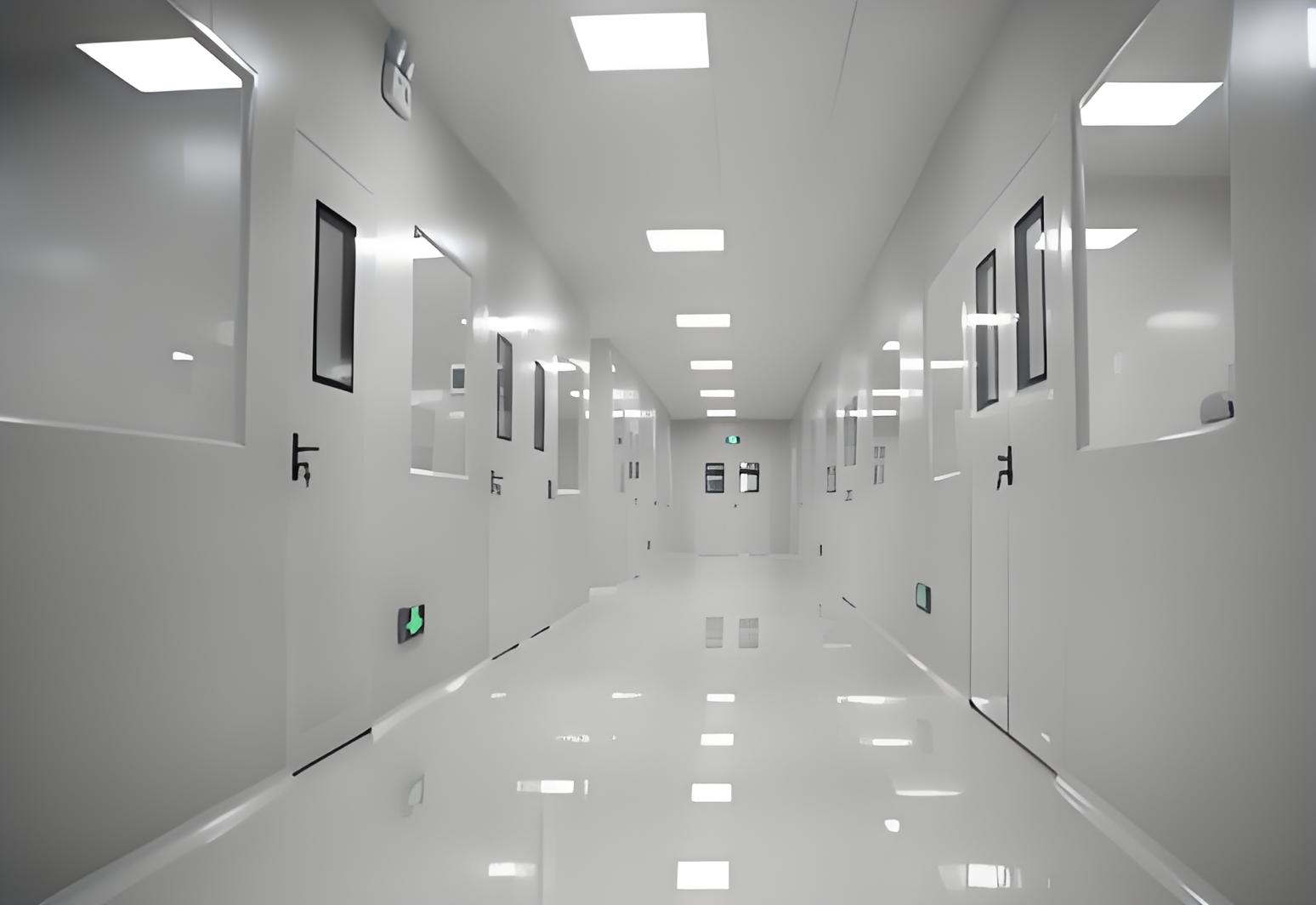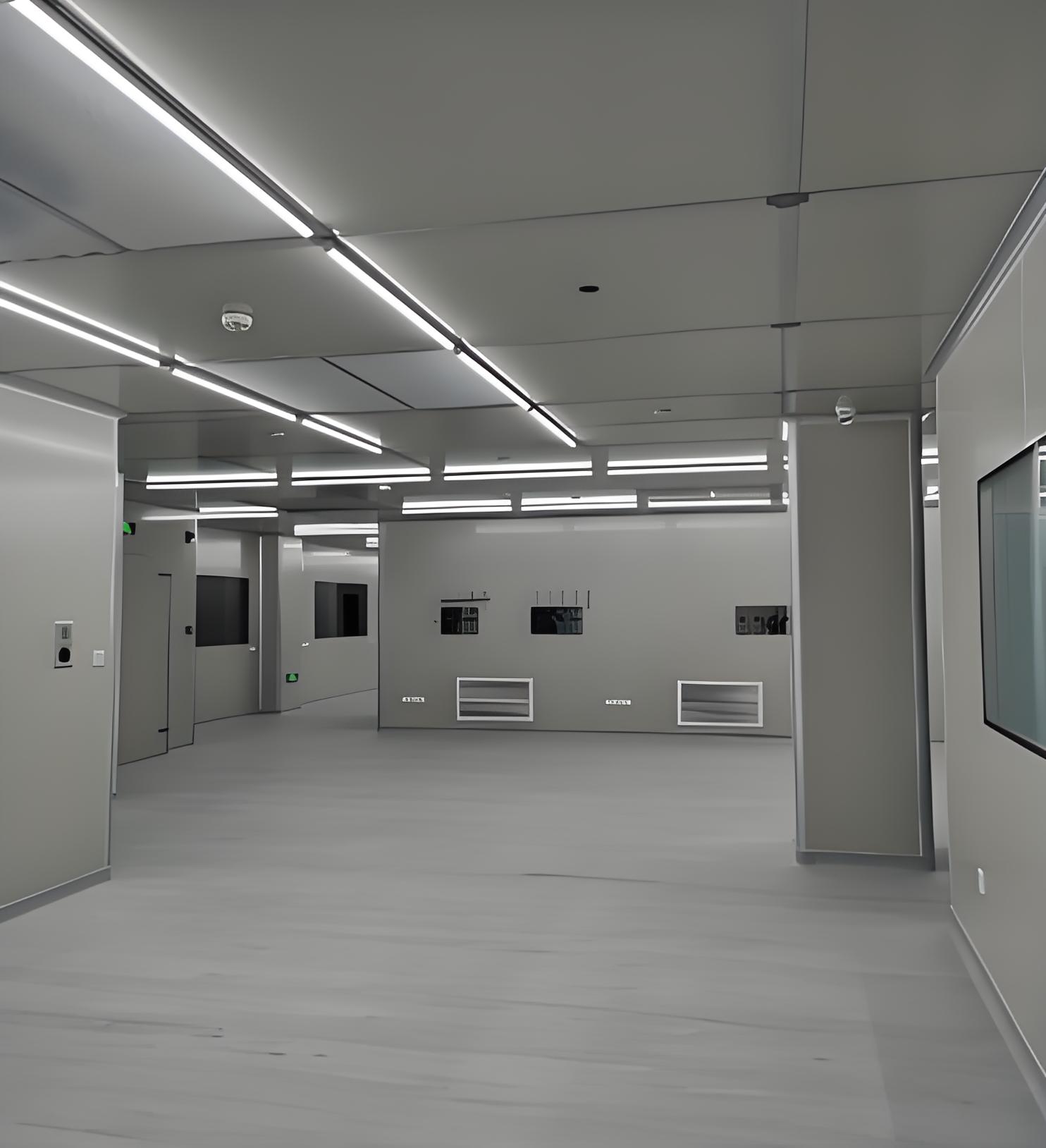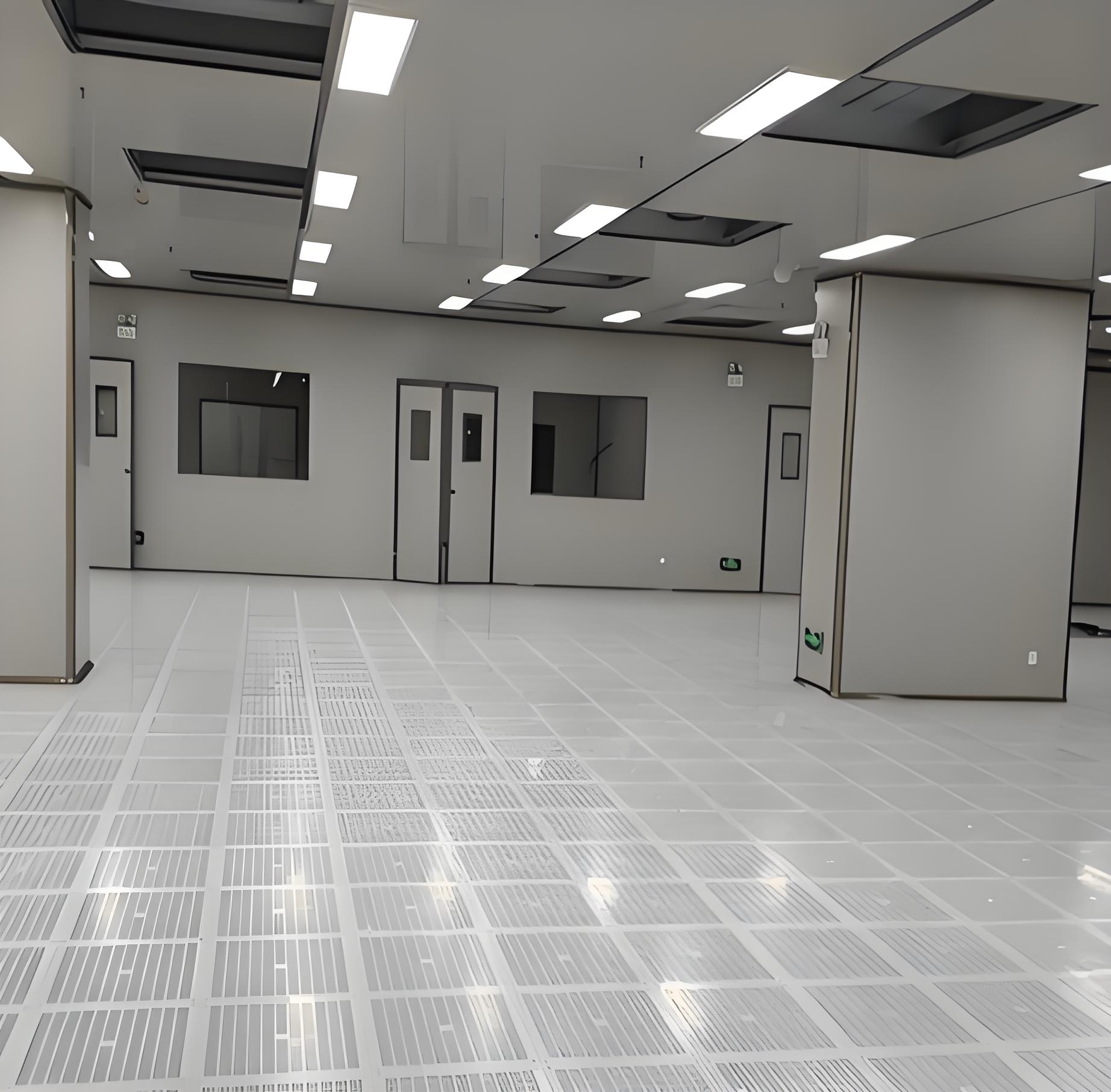




In controlled environments like pharmaceutical labs, biotechnology facilities, and semiconductor manufacturing plants, air quality is non-negotiable. At the heart of these sterile spaces lies the clean room diffuser, a component often overlooked but critical for ensuring contaminant-free airflow. Unlike standard ventilation systems, a clean room diffuser works in tandem with GMP cleanroom HEPA filter units to maintain the rigorous standards required in Good Manufacturing Practice (GMP) settings. Whether you're a facility manager, an engineer, or someone looking to upgrade your cleanroom, understanding the role of diffusers is essential. This article dives into the intricacies of clean room diffuser technology, highlights key considerations when working with cleanroom diffuser manufacturers, explains where to buy fan filter unit systems, and provides a practical guide on how to select cleanroom ceiling diffuser options for your specific needs. By the end, you'll have a clear roadmap to optimize your cleanroom's performance, ensuring compliance and efficiency.

A clean room diffuser is a specialized device designed to distribute filtered air evenly throughout a cleanroom while minimizing turbulence and particle generation. In essence, it acts as the final point of delivery for air that has passed through GMP cleanroom HEPA filter systems. These diffusers are engineered to maintain unidirectional airflow, which is crucial in environments where even microscopic contaminants can compromise product quality. For instance, in pharmaceutical settings, a clean room diffuser helps prevent cross-contamination by ensuring that air moves in a laminar pattern, sweeping particles away from critical zones.
The functionality of a clean room diffuser extends beyond mere air distribution. It integrates with fan filter units (FFUs) to regulate pressure differentials, temperature, and humidity. When selecting a diffuser, it's vital to consider factors like material compatibility (e.g., stainless steel for corrosion resistance) and design specifications to match the cleanroom classification. Reputable cleanroom diffuser manufacturers often provide custom solutions tailored to GMP requirements, emphasizing the importance of collaboration in the design phase. By understanding the core mechanics, you can better appreciate why a well-chosen diffuser is indispensable in achieving ISO standards and GMP compliance.
GMP cleanroom HEPA filter units are the backbone of any cleanroom air handling system, capable of removing 99.97% of particles as small as 0.3 microns. When paired with a clean room diffuser, these filters ensure that the air entering the controlled environment is virtually free of contaminants. The synergy between the filter and diffuser is what defines the efficiency of a cleanroom. For example, in a Grade A pharmaceutical cleanroom, the GMP cleanroom HEPA filter captures airborne microbes and particles, while the clean room diffuser disperses this purified air without creating eddies that could reintroduce pollutants.
This combination is particularly critical in applications like vaccine production or microelectronics, where even minor impurities can lead to costly failures. Regular maintenance of GMP cleanroom HEPA filter systems—including integrity testing and replacement—is essential to sustain performance. Moreover, when you buy fan filter unit setups, ensure they include certified HEPA filters that meet regulatory standards such as those from the FDA or EU GMP guidelines. By investing in high-quality filters and diffusers, facilities can achieve consistent air changes per hour (ACH), reduce energy consumption, and extend the lifespan of their cleanroom infrastructure.
Selecting the right cleanroom diffuser manufacturers is a decision that impacts the long-term reliability of your cleanroom. Not all manufacturers are created equal; some specialize in custom designs for high-risk environments, while others offer off-the-shelf solutions for less critical applications. When evaluating cleanroom diffuser manufacturers, consider their experience with GMP compliance, material quality, and after-sales support. For instance, a manufacturer with a track record in pharmaceutical projects will likely provide diffusers that integrate seamlessly with GMP cleanroom HEPA filter systems.
Additionally, look for manufacturers who offer comprehensive services, including computational fluid dynamics (CFD) analysis to optimize airflow patterns. This is especially important when you need to buy fan filter unit components, as a mismatched diffuser can lead to hotspots or contamination. Certifications like ISO 9001 or ASME BPE can serve as indicators of quality. Don't hesitate to request case studies or client references to verify performance. By partnering with reputable cleanroom diffuser manufacturers, you can ensure that your investment meets both functional and regulatory demands, ultimately safeguarding your operations.

Knowing where to buy fan filter unit (FFU) systems is crucial for assembling an effective cleanroom. FFUs are self-contained modules that include a fan and a HEPA or ULPA filter, often mounted in the ceiling grid to work with a clean room diffuser. When looking to buy fan filter unit products, start by identifying suppliers who specialize in cleanroom components. Online marketplaces, direct manufacturers, and industrial distributors are common sources, but it's advisable to choose those with GMP expertise to avoid compatibility issues.
Before making a purchase, assess key specifications such as airflow velocity, noise levels, and energy efficiency. For example, a FFU with variable speed control can adapt to changing cleanroom conditions, enhancing flexibility. It's also wise to consider the total cost of ownership, including maintenance and filter replacements. Many cleanroom diffuser manufacturers offer bundled packages that include FFUs and diffusers, simplifying procurement. When you buy fan filter unit systems, ensure they come with documentation like performance certificates and installation guides. This due diligence will help you integrate the FFU with your existing GMP cleanroom HEPA filter and diffuser setup, maximizing overall system cohesion.
Understanding how to select cleanroom ceiling diffuser components is fundamental to achieving optimal airflow distribution. The process begins with assessing your cleanroom's classification and operational requirements. For instance, a Class 100 cleanroom might require a laminar flow diffuser, while a Class 10,000 area could use a turbulent flow design. When learning how to select cleanroom ceiling diffuser models, focus on factors like face velocity, pressure drop, and material construction. Stainless steel or anodized aluminum are popular choices for their durability and ease of cleaning.
Another aspect of how to select cleanroom ceiling diffuser units involves compatibility with other systems. Ensure the diffuser aligns with your GMP cleanroom HEPA filter and FFU specifications to prevent airflow restrictions. Consulting with cleanroom diffuser manufacturers during this phase can provide valuable insights into customizations, such as perforated plates or dampers for flow control. Additionally, consider future scalability; a modular diffuser design might facilitate upgrades. By following a structured approach to how to select cleanroom ceiling diffuser products, you can enhance contamination control, reduce operational costs, and maintain compliance with international standards like ISO 14644.
The integration of a clean room diffuser with GMP cleanroom HEPA filter and FFU systems is where theory meets practice. This holistic approach ensures that air handling components work in harmony to maintain cleanliness levels. For example, in a biotech lab, proper integration can prevent dead zones where contaminants accumulate. Start by mapping airflow patterns using simulation tools, then coordinate with cleanroom diffuser manufacturers to tailor the diffuser layout. This might involve selecting diffusers with adjustable louvers or those designed for high-velocity applications.
Regular validation, including particle counting and airflow visualization tests, is essential to verify performance. When you buy fan filter unit and diffuser systems, opt for those with monitoring capabilities, such as built-in sensors for pressure and temperature. This data can inform maintenance schedules and preempt failures. Moreover, training staff on the interplay between diffusers and filters fosters a culture of proactive upkeep. By prioritizing integration, facilities can achieve a robust cleanroom environment that supports both productivity and safety.
The landscape of cleanroom technology is evolving, with innovations poised to enhance the efficiency of clean room diffuser and GMP cleanroom HEPA filter systems. Emerging trends include smart diffusers equipped with IoT sensors for real-time airflow monitoring and self-adjusting capabilities. These advancements could revolutionize how we buy fan filter unit products, shifting toward predictive maintenance and energy optimization. For instance, AI-driven systems might automatically calibrate diffusers based on occupancy or particle counts, reducing human error.
Additionally, sustainable materials are gaining traction, with cleanroom diffuser manufacturers developing recyclable or low-carbon footprint options. As regulations tighten, understanding how to select cleanroom ceiling diffuser models will involve evaluating their environmental impact alongside performance. By staying abreast of these trends, facilities can future-proof their investments and maintain a competitive edge in industries like pharmaceuticals and aerospace.
Q1: What is the primary function of a clean room diffuser in a GMP environment?
A1: The primary function of a clean room diffuser in a GMP environment is to distribute HEPA-filtered air uniformly while minimizing turbulence and contamination risks. It ensures laminar or unidirectional airflow, which is critical for meeting strict regulatory standards and protecting sensitive processes from particulate interference.
Q2: How often should GMP cleanroom HEPA filters be replaced?
A2: GMP cleanroom HEPA filters typically require replacement every 3 to 5 years, but this depends on usage, environmental conditions, and regular monitoring. Conducting periodic integrity tests, such as DOP or PAO testing, can help determine the optimal replacement schedule to maintain efficiency.
Q3: What should I look for when evaluating cleanroom diffuser manufacturers?
A3: When evaluating cleanroom diffuser manufacturers, consider their industry experience, compliance with GMP and ISO standards, material quality, and customer support services. Look for certifications and request case studies to ensure they can deliver solutions tailored to your specific cleanroom requirements.
Q4: Where is the best place to buy fan filter unit systems?
A4: The best places to buy fan filter unit systems include specialized cleanroom equipment suppliers, direct manufacturers, and reputable online distributors. Prioritize vendors who offer technical support, warranty options, and products that integrate seamlessly with your existing clean room diffuser and HEPA filter setup.
Q5: Can you provide tips on how to select cleanroom ceiling diffuser types for high-humidity areas?
A5: When learning how to select cleanroom ceiling diffuser types for high-humidity areas, opt for corrosion-resistant materials like stainless steel or coated aluminum. Ensure the design includes drainage features and compatibility with dehumidification systems to prevent moisture buildup, which could compromise airflow and filter performance.
Q6: How do clean room diffusers contribute to energy efficiency in a facility?
A6: Clean room diffusers contribute to energy efficiency by optimizing airflow distribution, reducing the workload on HVAC systems. When paired with efficient GMP cleanroom HEPA filter and FFU units, they help maintain desired cleanliness levels with lower energy consumption, leading to cost savings over time.
In summary, a clean room diffuser is more than just a component—it's a pivotal element in sustaining GMP compliance and operational excellence. By understanding its interaction with GMP cleanroom HEPA filter systems, carefully selecting cleanroom diffuser manufacturers, knowing where to buy fan filter unit products, and mastering how to select cleanroom ceiling diffuser options, you can build a cleanroom that stands the test of time. As technology advances, staying informed will ensure your facility remains at the forefront of cleanliness and efficiency.